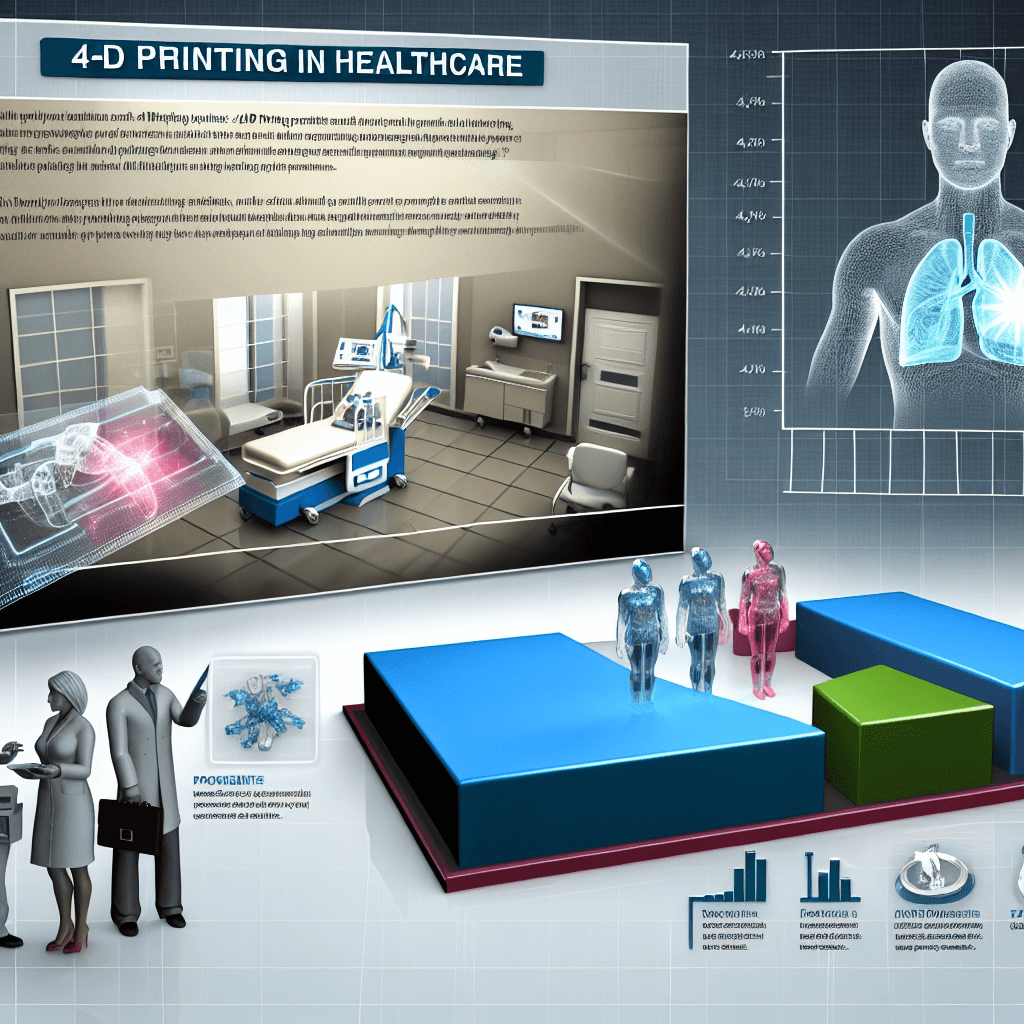Explore the 4D Printing in Healthcare Market: trends, size, share, opportunities, and forecasts.
4D Printing In Healthcare Market Size, Share, Opportunities & Forecast

Table of Contents
4D Printing in Healthcare: Market Size, Share, Opportunities & Forecast

The advent of 4D printing, an extension of 3D printing technology with the addition of time as the fourth dimension, is revolutionizing various industries, including healthcare. This innovative technology allows printed objects to change their shape or properties over time when exposed to external stimuli such as temperature, light, or other environmental factors. The potential of 4D printing in healthcare is vast, ranging from customized implants and prosthetics to smart medical devices and complex drug delivery systems. This article explores the market size, share, opportunities, and forecasts of 4D printing in the healthcare sector, providing a comprehensive overview of its current state and future prospects.
Understanding 4D Printing Technology
4D printing technology is closely related to 3D printing. It involves the same layered approach but incorporates materials that can change their state after printing. This responsiveness to environmental stimuli is what sets 4D printing apart and opens up new applications that 3D printing cannot achieve alone.
- Smart Materials: At the heart of 4D printing are smart materials that react to external stimuli such as heat, moisture, or light.
- Programmability: The objects printed using 4D technology can be programmed to undergo specific changes in shape or function when exposed to certain conditions.
Market Size and Growth Drivers
The global market for 4D printing in healthcare is projected to grow significantly in the coming years. According to a report by Grand View Research, the market is expected to expand at a compound annual growth rate (CAGR) of approximately 29.9% from 2021 to 2027. This growth is driven by several factors:
- Innovation in Material Science: Advances in material science that allow for more sophisticated and responsive materials are crucial for the expansion of 4D printing applications in healthcare.
- Increasing Demand for Personalized Medicine: Personalized medical devices and implants tailored to individual patients’ anatomies and needs are becoming increasingly popular, fueling the demand for 4D printing solutions.
- Support from Regulatory Bodies: Supportive regulations and funding from government bodies worldwide are encouraging research and adoption of innovative technologies like 4D printing in healthcare.
Key Opportunities in Healthcare
The integration of 4D printing technology into healthcare promises to transform the industry by providing more dynamic and adaptive solutions. Some of the key areas where 4D printing is set to make a significant impact include:
- Prosthetics and Orthotics: 4D printing allows for the creation of prosthetic limbs and orthotic devices that can adapt their shape according to the user’s movements and changes in the environment, offering better comfort and functionality.
- Bioprinting of Living Tissues: Researchers are exploring the potential of 4D printing for bioprinting tissues that can self-assemble or change properties over time, which could be crucial for tissue engineering and regenerative medicine.
- Smart Drug Delivery Systems: 4D printed drug delivery devices can release drugs at a controlled rate and react to stimuli such as pH changes or temperature, improving the efficacy and safety of treatments.
Challenges and Limitations
Despite its potential, the adoption of 4D printing in healthcare faces several challenges:
- Technical Limitations: The complexity of programming and predicting the behavior of smart materials can be a significant barrier.
- High Costs: The high cost of 4D printing technologies and materials can limit its accessibility and adoption, particularly in developing countries.
- Regulatory Hurdles: Ensuring safety and efficacy for 4D printed medical products can lead to complex and lengthy regulatory processes.
Case Studies and Real-World Examples
Several pioneering case studies illustrate the potential of 4D printing in healthcare:
- Self-Adjusting Implants: Researchers at MIT have developed a 4D printed implant that can change its shape once inside the body to adapt to the surrounding tissue or grow with the patient.
- Responsive Sutures: Scientists are working on 4D printed sutures that can tighten or loosen in response to the healing process, improving the recovery of surgical patients.
Future Outlook and Forecast
The future of 4D printing in healthcare looks promising, with continuous advancements in technology and materials. As the technology matures and becomes more widespread, it is expected to become a fundamental part of medical treatment, offering solutions that are not only more effective but also more personalized and responsive to patients’ needs.
Conclusion
4D printing in healthcare is poised to revolutionize the field by introducing more adaptive, efficient, and personalized medical treatments. With significant growth projected for the market, driven by technological advancements and increasing demand for personalized medicine, the future looks bright for this innovative technology. However, overcoming technical, cost, and regulatory challenges will be crucial for its widespread adoption and success.
As we continue to explore the capabilities and applications of 4D printing, it remains a promising frontier in the quest for more advanced healthcare solutions, offering a glimpse into the future of medicine where treatments are tailored not just to the disease but also to the patient’s unique conditions and needs.








